Discover the teaser trailer for Méliès is Gone, beautifully illustrated by Jean-Rémi, and voiced by Audrey as Georgette!
a detective game about an ill-fated film
Discover the teaser trailer for Méliès is Gone, beautifully illustrated by Jean-Rémi, and voiced by Audrey as Georgette!
Hi ! Maxime here to talk about tech art !
Today I want to put emphasis on projection and old camera effect.
To stay faithfull to old cinema and the universe of George Méliès, we needed to age our tapes to make them look like old movies.
Without the effects the scene would look like this :
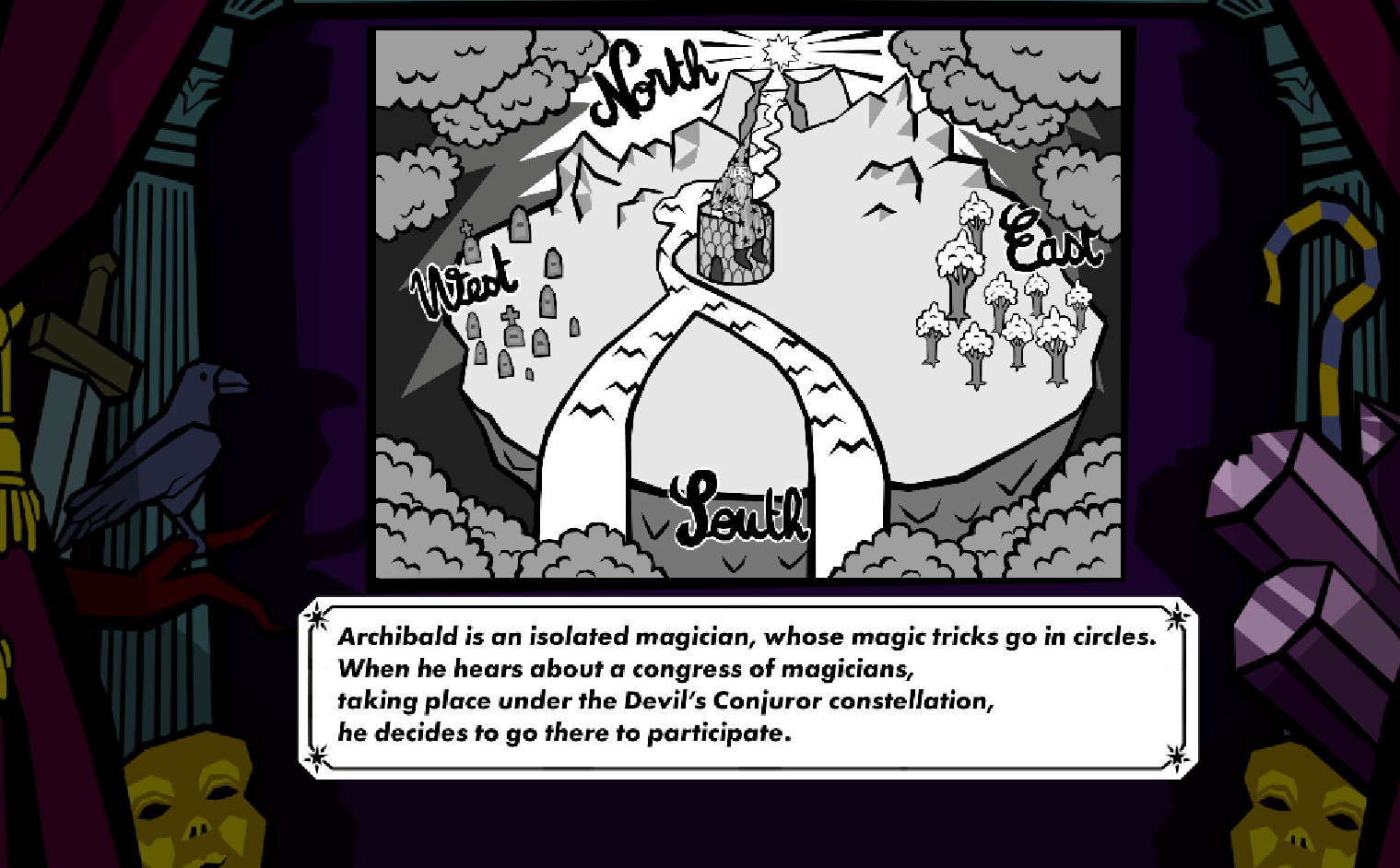
Thanks to the magic of shaders and VFX, we are able to age our film with few tricks. And then we are combining this effect with some shattering lights to have the final scene here :
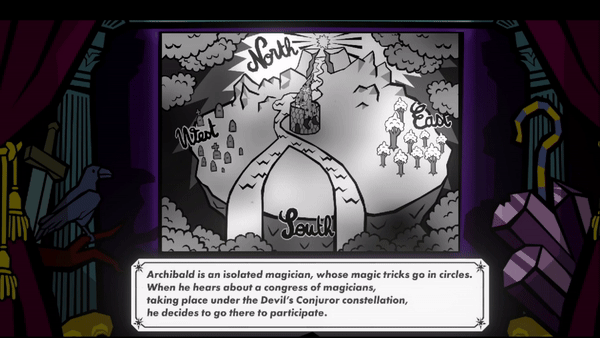
We hope you are enjoying our work, see you next devlog !
Hi ! Maxime here to talk about tech art !
Thanks to Jean-Rémi we have awesome drawings for our scenes, and we need to give them life.
Hugo already talked about it so I won’t be long but the first step was to implant lights in every scenes to make them less frozen in time.
Then, we need for the player to feel atmosphere that Georgette feels. For this, I implemented some details to make the illusion that the scene lives.
You can see snow falling from the sky through the shattered glass.
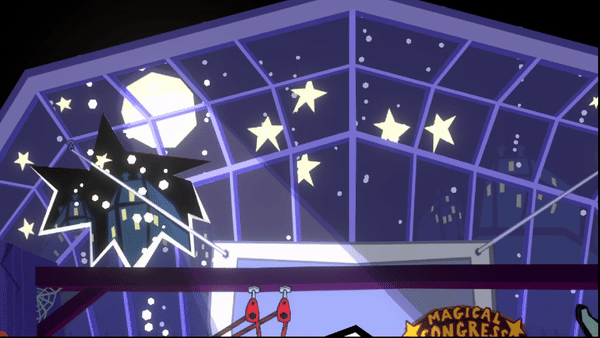
At the bottom of the gif if you look closely you can also see ropes moving.
But what’s better than ropes moving ? Ropes moving with spooky props !

We are finaly arriving to a living scene thanks to the work of everyone and it’s a joy to watch.
Next step : a sneek peak into the camera projection effect.
Remember the first two concept prototypes from Méliès is Gone?
They were built using premade 3D assets in Unreal Engine. Since then, we have worked hard, as we aim to create a full 2D experience with this game!
And now, as time has passed we can see our efforts coming to fruition!
Here’s how Méliès is Gone looked just one month ago, when the project was playtested:
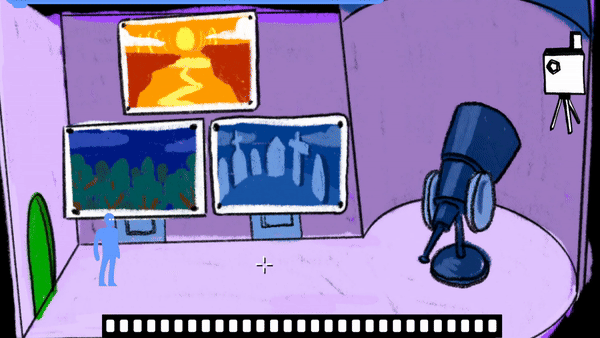
Here’s how it looked like just two weeks ago, after
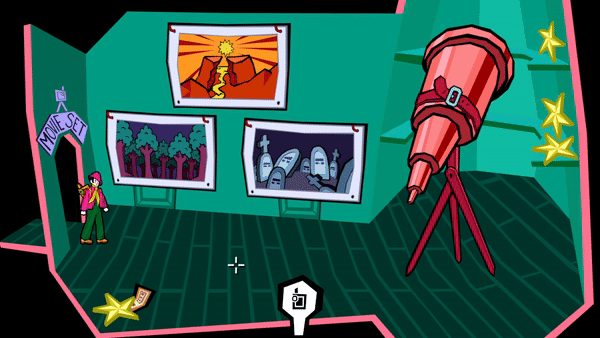
And here is how it looks today, after Jean-Rémi added many more details, and Maxime added visual effects to the game!
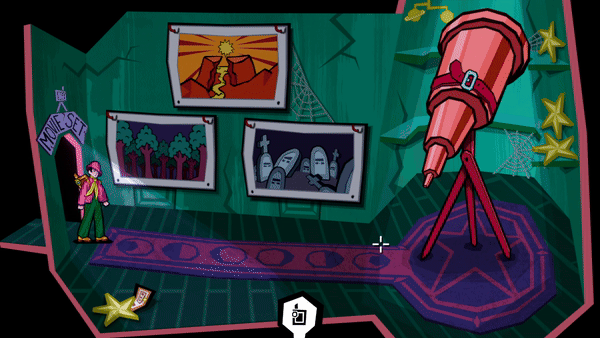
We’re getting really close to completing a first “vertical slice” prototype for Méliès is Gone! Stay tuned for more!
Hey there! Audrey & Jean-Rémi here!
Audrey is the U.X. (User Experience) expert and Jean-Rémi the artist in our team.
Today we wanted to talk to you about U.I. (User Interface) Design.
We’re going to show you how we managed the Cinematograph menu that will allow the player to access the main gameplay mechanics: filming, editing and screening !
U.I. design may seem like a simple task. But it’s actually quite demanding to get right.
It is the core link between you and your interactions with our game.
We worked together to make this interface clear and intuitive, while making it coherent with our art direction.
While playing “Méliès is Gone” a button with a cinematograph pictogram will always be present at the bottom of the screen. Clicking on it will open the Cinematograph menu.
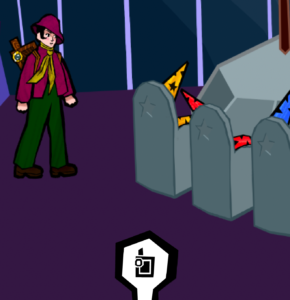
At first we wanted the cinematograph icon to grow with the animation of the menu opening. But it was taking too much space and created a weird interface shape.
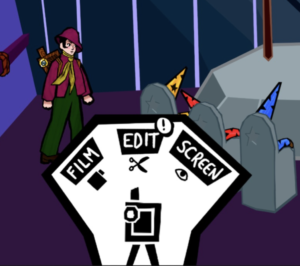
It was important for us that the menu design would have a meaning related to the cinema theme of our game.
We then thought of designing an interface inspired by the shape of a cinema reel.
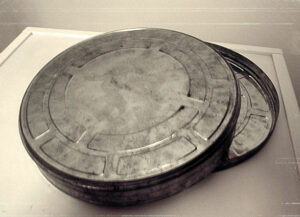
Leading us to the menu we have now.
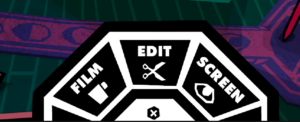
A good U.I. is a U.I. you won’t notice.
A bad U.I. will impact negatively the experience you have with a game.
That’s why we took time to make it the most intuitive possible.
Thank you for reading today’s devlog.
We cannot wait to show you more and have you playing our game.
Au revoir !
Hi !
Thibault here, game and narrative designer on Méliès is Gone and today, we’re talking about how all things should start : with an onboarding of course ! For our initial prototype, we had in mind to create an organic onboarding, introducing the players to our game’s narrative and mechanics. In this onboarding, Georgette is arriving in the studios and collecting documents informing her on what happened to her father, Georges Méliès. For instance, when she is entering the front door, she stumbles on unopened mail. If the content of this mail is conveying some key elements for the story (Méliès was broke, and did not give news anymore to Georgette), we also tried to tell a part of this story by the very context in which Georgette is finding this mail. If it’s left unopened on the floor, it must be because nobody’s home for a long time ! You can even trace how long it has stayed on the floor thanks to the date on the document. That’s good narrative design, right ?
Then, the player is introduced to our beloved cinematograph. Georgette is picking the machine, with a manual attached. This manual works as a tutorial for the controllers, but is organically integrated within our narrative by mimicking the original cinematograph manual. Finally, the onboarding ends with a first, short puzzle. This puzzle easily introduces the player both to the logic of the game and the gameplay loop.
To easily conceptualize this onboarding, I drew everything by hand, scanned it and put it on Unity (with the help of our great developer, Hugo). For our final prototype, we eventually decided to drop this introduction, as it was going to be too long and would have taken several additional weeks to be completed with the same level of polish as the rest of the prototype.
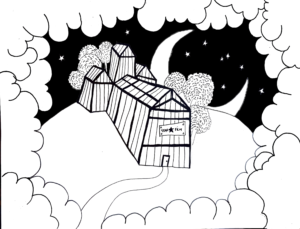
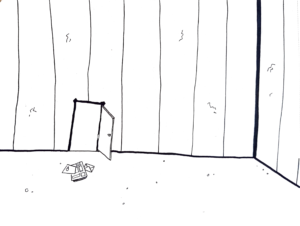


Hi, my name is Audrey and I’m an UX designer/researcher on the Méliès is Gone project. I was in charge of setting up playtests for our project.
But what exactly are playtests?
A “playtest” is a development phase where the game is played and evaluated by testers, recruited from outside the development team. These sessions are used to identify and correct gameplay problems, bugs and balancing issues, and to gather feedback on the overall gaming experience.
We had the opportunity to test our prototype in a laboratory of ergo-design.
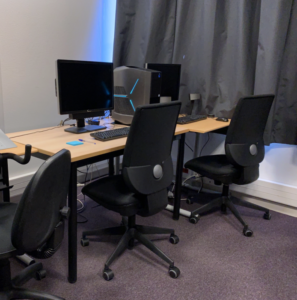
The prototype consisted of an introductory riddle and a more complex main riddle. The player must discover the elements to be filmed with the cinematograph, based on clues and scenery and then integrate them in the right place in a movie scene which has missing elements.
We were lucky enough to be able to write our protocol with a professional who is used to carrying out user tests.
From the template which he had prepared, we detailed several key aspects :
The device: Our game : “Méliès is gone”
Goals and of tests: Our aim was to validate the general concept of the game, evaluate the gameplay, measure interest for the proposed content and verify the effectiveness of onboarding.
Profile of participants: We targeted five people with a passion for investigative games and/or cinema, to ensure that the feedback would be relevant.
Optimistic assumptions: we made optimistic assumptions that we hoped to validate during testing, especially with regard to the game’s accessibility and the clarity of instructions.
Measurement methods: Because of the nature of the game, which can be solved in different ways and in different orders, we chose to measure the time taken to solve the onboarding and the main riddle as performance indicators.
Observations: We decided not to ask users to verbalize their thinking process. In fact, verbalizing could have disrupted their concentration on the riddle and distorted the results, especially with regard to time resolution metrics. In terms of the guidance we wanted to give playtesters, we chose to help them only if they were not at ease with English or if they couldn’t read certain documents. We didn’t want to help them any more than that because these playtests would allow us to gauge the difficulty of the various puzzles and whether they were feasible.
We asked the user to wear eye-tracking glasses in order to follow their gaze and record their spontaneous reactions.

We developed a pre-test questionnaire, a rainbow spreadsheet, a post-test questionnaire and an interview grid.
This methodical and structured approach enabled us to establish a strong protocol for our user tests, the reliability and relevance of the results obtained.
We wrote an accurate unfolding :
Thanks to the tests, we were able to highlight a number of problems that we may or may not have previously identified. Here are a few examples (not exhaustive).
To conclude, playtesting is a really important part of game design. It’s a crucial process that enables designers to gather essential feedback from players, detect any problems we hadn’t noticed, and make any necessary improvements. Playtests offer a valuable opportunity to evaluate the user experience, test gameplay, check the clarity of instructions and gauge the game’s level of difficulty. By analyzing players’ reactions and gathering their feedback, designers can adjust and fine-tune every aspect of the game to deliver an optimal gaming experience. In short, playtests are an indispensable tool for guaranteeing quality and player satisfaction, and iterating with them saves precious time and enhances game quality.
A une prochaine fois !
Hi everyone!
Jean-Rémi here, I’m the artist working on “Méliès is Gone”. The detective game inspired by the life and work of filmmaker and magician Georges Méliès.
In our game, we did not want the main character to be a random detective.
Instead, the player will play as Méliès’ daughter, Georgette.
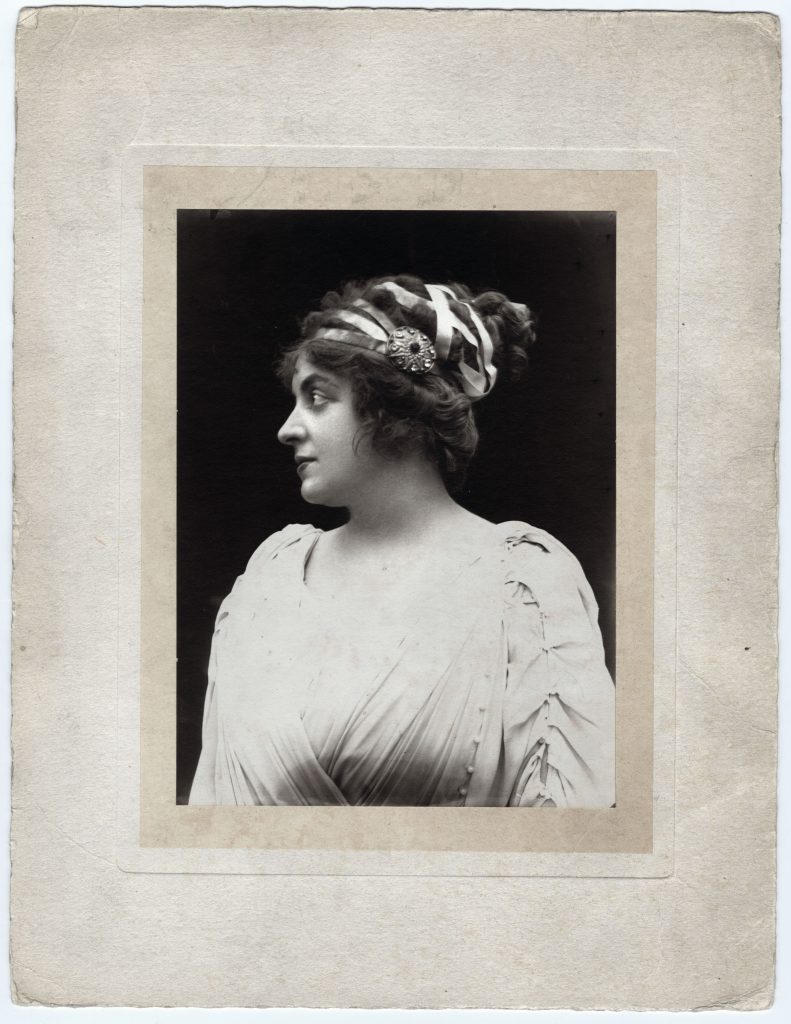
We don’t have a lot of information about Georgette.
From what we gathered: she was one of the first EVER woman to work on films. Both as an actress and as a camera operator.
Since our main character is going to use a cinematograph to solve mysteries, we thought she would be the perfect character to play as.
Here are some early sketches for her design.
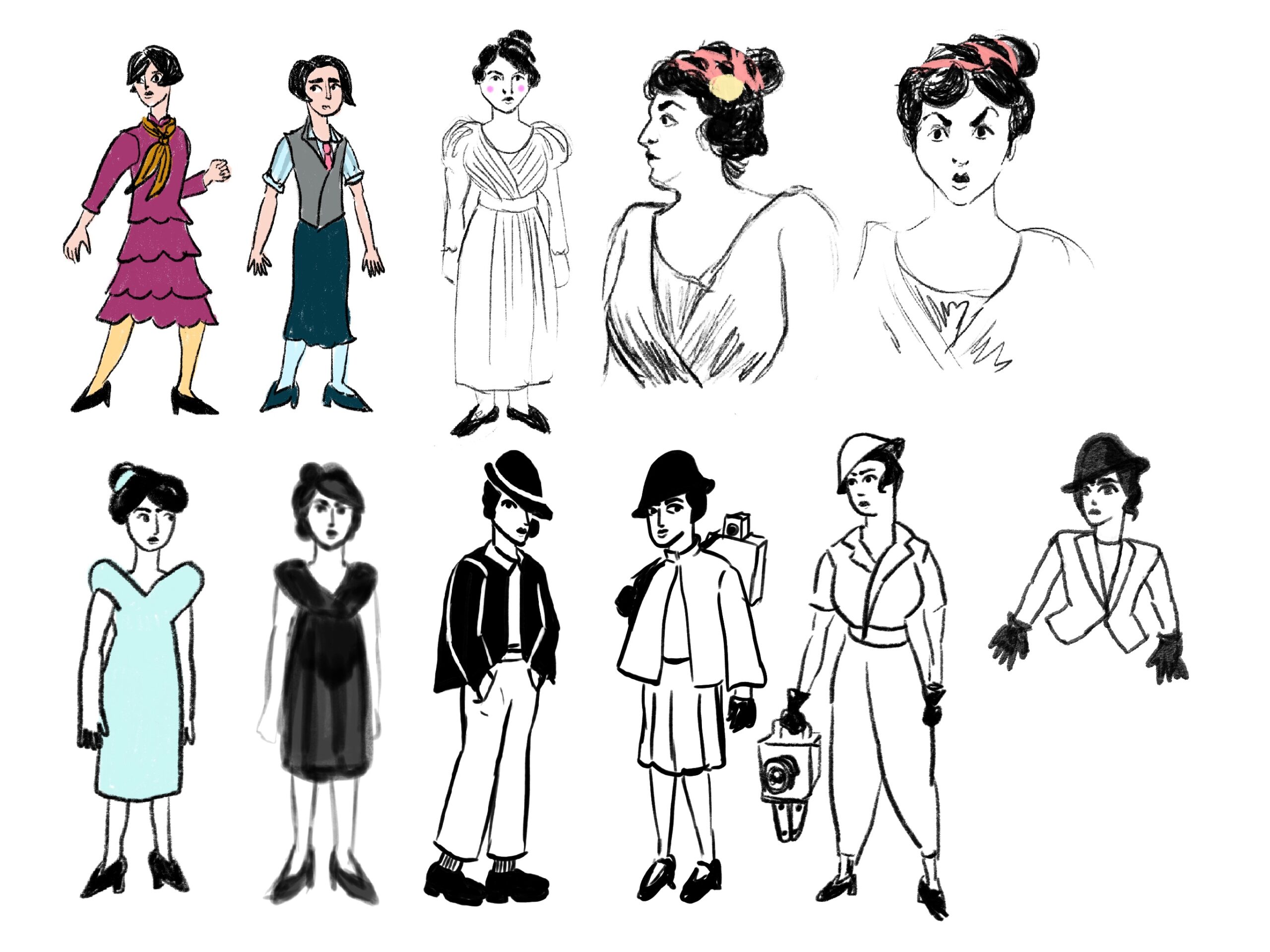
Our game takes place in the late 20s in the suburbs of Paris.
At the time women started to fight for more rights and it impacted fashion. Women started to wear clothes that allowed more movements borrowing element of men’s clothing creating “La Garçonne” style (similar to the Flapper movement).

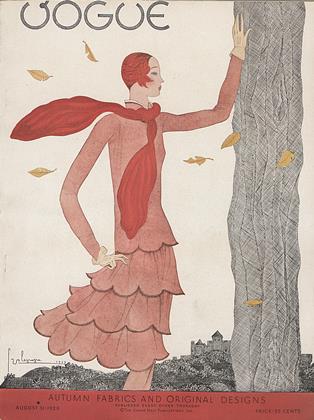
Since our game is about investigating on Méliès’ disappearance but also to explore his cinema studio, we thought it would be fitting for Georgette to be dressed as a Garçonne.
Here’s the frame by frame animation of Georgette idle’s
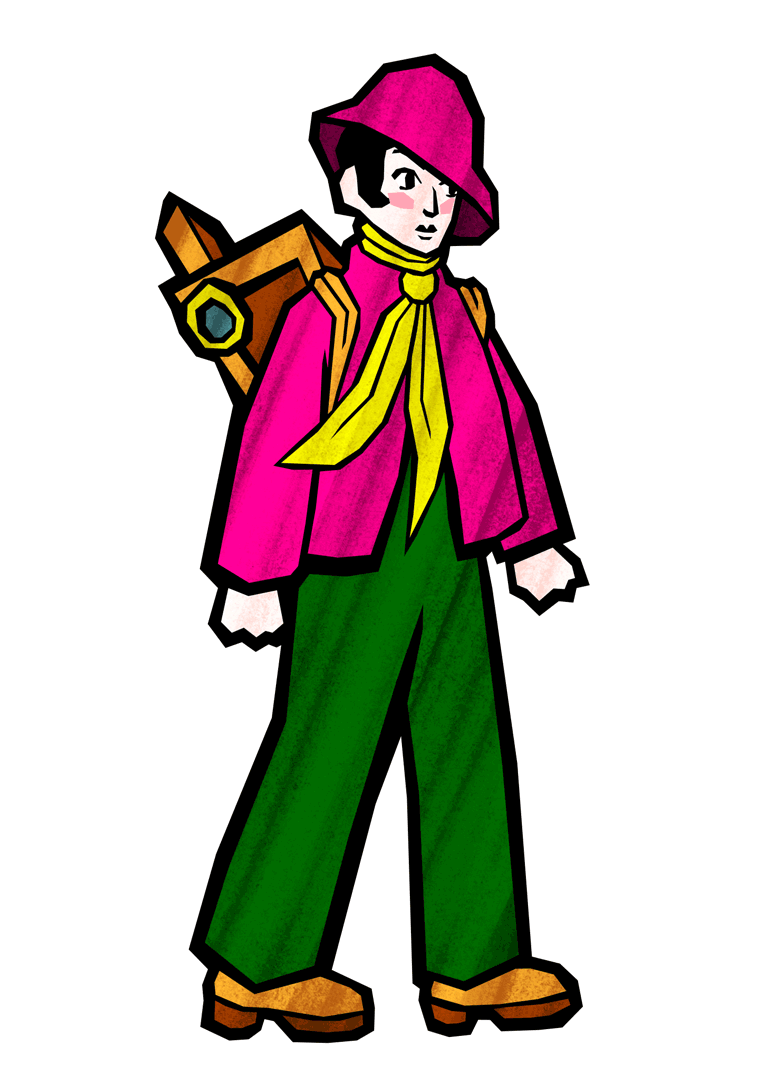
And here’s my working process to animate her walking cycle animation
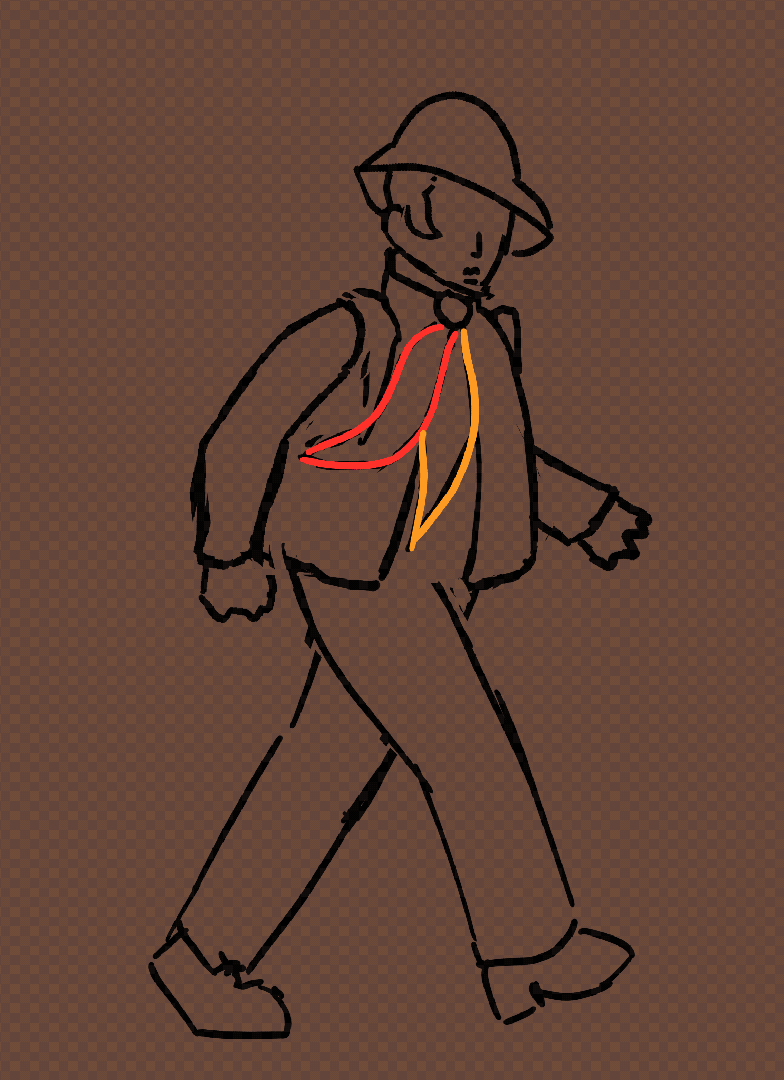
Hope you’re enjoying Georgette’s look.
Cannot wait to show more in the next devlog.
I’ll try to talk a bit more about environment and art direction.
Au revoir !
Hi everyone,
While making our little Méliès game, we stumbled upon an issue : we didn’t know how to create an investigation puzzle ! Pretty big issue for a team who is supposed to create a detective game, right ?
On the course of our development, we therefore decided to start game jaming between us in order to see what ideas we could find individually, and how we could pick the best of each proposal for our game. But we didn’t want to start right on with Unity ; no, we wanted to keep it simple, to go fast and aim for efficiency. So we decided to start with paper, with a strong belief that if we were able to create an investigation puzzle that would be fun that way, it would be all the way more enjoyable once built in a game. Today, I will be presenting the first investigation puzzle I created, which ended up being partly used for our final prototype.
This puzzle has been designed to test some of our game’s core mechanisms on paper. It requires a good deal of guidance from the tester, as not all of the game’s mechanics and interactive features are explained to the player. Yet, it offers an experience relatively close to the one we’re aiming for.
The character can move around the two spaces indicated as the studio. This is the physical space, in Montreuil in 1929, in which Georgette evolves, in search of her father. At any given moment, she can screen – thanks to the cinematograph – three scenes, corresponding to the three papers drawn in black and white. On her way in the studio, she comes across letters, books, notes and all sorts of preparatory visual documents that have been left behind in the different rooms. These provide a reservoir of clues, but are not the entirety of the clues that can be found in the game, as these are also to be found in the studio setting itself – which act as a sort of witness of the making of the film the player is investigating – as well as in the scenes that they investigate. These scenes are partially solved here: two have already been completed. The player can therefore rely on what he sees on the screen as a solid basis of clues, but also on the scripts of these scenes, which reveal other clues, missing from the image.
In this exercise, therefore, there is only one scene to complete, whose script is not yet known. Three elements are missing and will have to be inlaid. The player, moving around the studio between two rooms, can choose at any time to shoot an element of his choice, and attach it into the incomplete scene. Even if, by its nature as a rather rough paper prototype, the puzzle requires a companion to be fully understood, you can try to take the time and figure it out for yourself and stop your reading here for a while!
CLUES
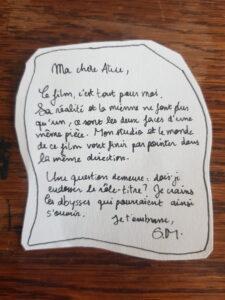
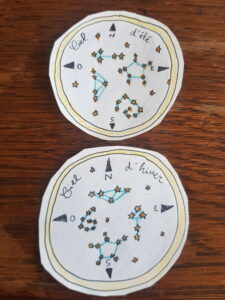
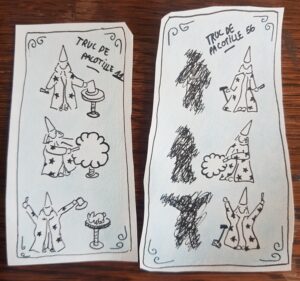
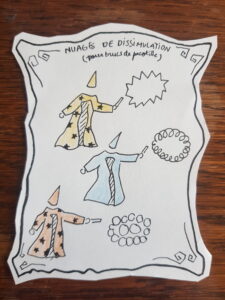
PLACE THAT YOU CAN EXPLORE IN THE STUDIO
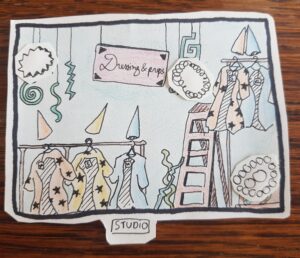

SCENES ALREADY FILLED


SCENE TO BE COMPLETED
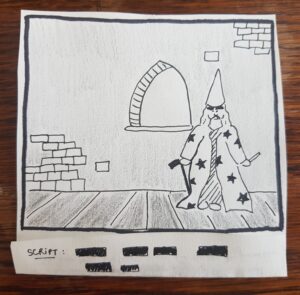
*SPOILERS BELOW*
Generally speaking, this scene takes place before the other two. Marcel the magician is performing a cheap trick, which you’ll need to understand. The idea of this scene revolves around a rather crude trick. As we can see from the two clues describing 2 tricks in detail, the central element of the trick – the prestige, if you like – is a cloud of concealment. This can conceal a magician’s hat, as in the first trick, but it can also conceal a lever, as in this trick. The first element to be inlaid is therefore a cloud of concealment.
The question is which one, since a clue tells us that there are three kinds of these! This exercise is a purely mathematical deduction, and can be taken in several directions, each leading to the same result. By observing Marcel in the scene to be completed, we see two large eyebrows. By cross-checking with the actors considered for this role, we understand that one of the actors can be discarded. The two remaining actors are either M or XL. A quick look in the dressing room reveals that the only XL magician’s dress has no stars: the actor chosen to play Marcel must therefore be Georges Méliès. The dress is therefore orange, which informs us by cross-referencing with the cloud index of the cloud to be attached (the one formed by circles).
Next to Marcel is a large void. As far as a movie frame is concerned, that’s something of an issue… In one of the clues to the junk towers, we see that a shadow is supposed to come to life when Marcel secretly moves the lever. Walking around the set, the lever can be seen connected to three ropes by a mechanism that hangs over the stage. Nearby, two puppets with exactly the same three attachments are laying. One of them must therefore be inserted into the scene…
Here, the resolution mechanic required of the player is to understand the chronology of the scenes, and to make use of it. In the congress scene, Marcel dreams of dumping his old puppet. The puppet at stake is hidden by the garbage bin in which it is placed, but you can still see its feet sticking out: they’re square. So you have to shoot the puppet with square feet and add it to the scene.
Finally, the last puzzle requires us to understand something deeper about the game universe: as a letter from Melies indicates, something happened in the making of this film, that brought together two very distinct spaces: the one of the film, and the of the studio. There are several aspects to this rapprochement, the first of which is quite simply geographical. Reality and fiction have merged, until their spaces become indistinguishable. Here, the set that the player is investigating is lying against the studio canopy. Outside, the stars are visible. Snow is falling, it must be winter. Using the sky charts and the arrow-shaped constellation we can identify, we can conclude that the direction facing us in the studio is East. Since the two worlds are merging, we can conclude that the direction facing us in the incomplete scene is also East. Therefore, through the window of the magician, we should see what is at his East ! Thanks to the map we see in one of the completed scenes, the East is full of trees. In the studio, matte paintings have been prepared to be inlaid on the film’s windows, so we need to film the one with lots of trees.
SCENE COMPLETED
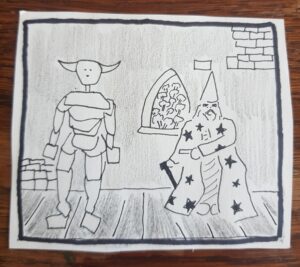

Thibault
Hi everyone, Jean-Rémi here.
I’m working on the visuals for our game “Méliès is Gone”.
In “Méliès is Gone” the player will play as Georgette, the daughter of film director Georges Méliès.

The game story will be a fiction inspired by Georges Méliès’ work and life.
In 1929, Georges Méliès is missing.
His daughter Georgette is left without any news from her father. That’s why she decides to go back to her father’ss cinema studios in Montreuil in order to investigate on his disappearance.
This is what the real studios used to look like in reality :
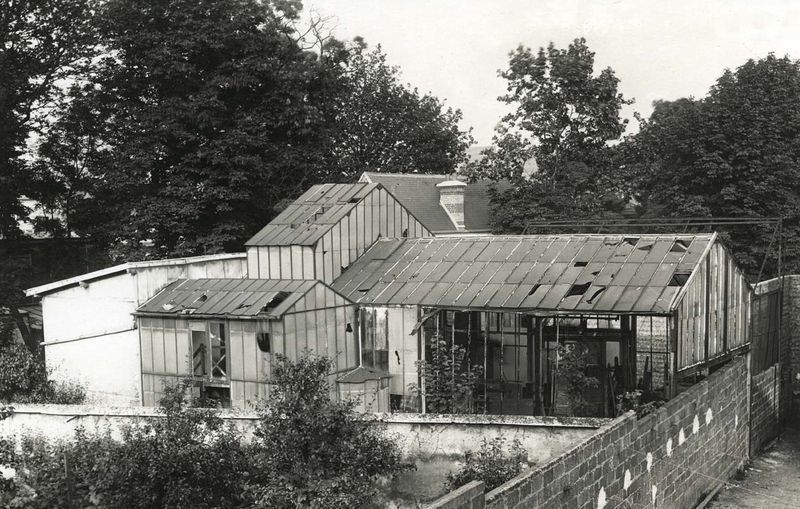
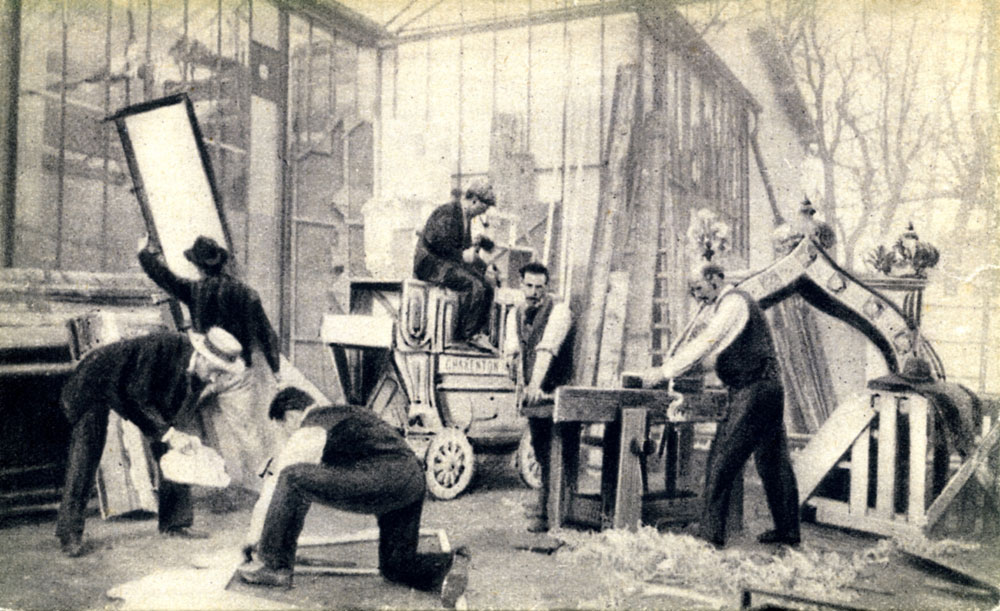
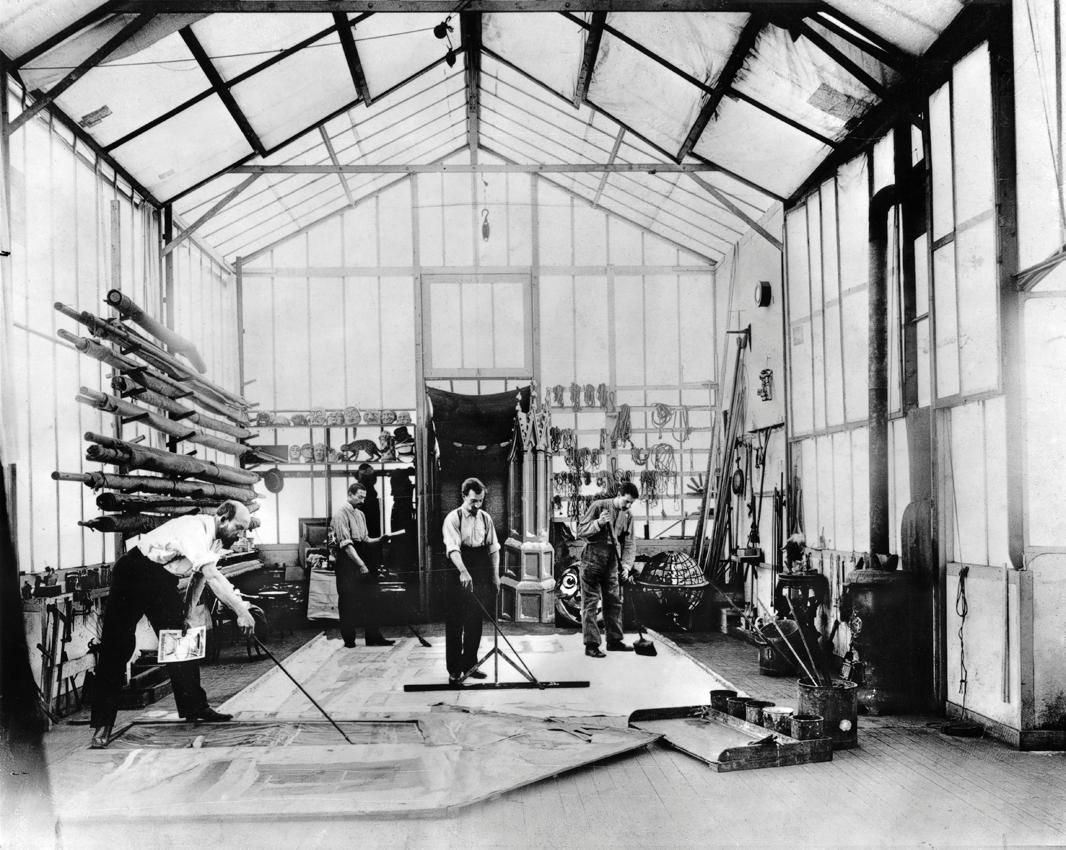
Before making movies, Georges Méliès was a magician.
One of the main theme used in his work, both as a magician and as a film director, is “fantasmagorie” also know a form of horror theatre: “the art of making ghosts speak in public”.
That’s why we wanted the setting of our game to be a reimagined spooky version of Méliès’ studios. As if we were in a haunted mansion.
Here are some early concept arts of what the studios could look like in our game.

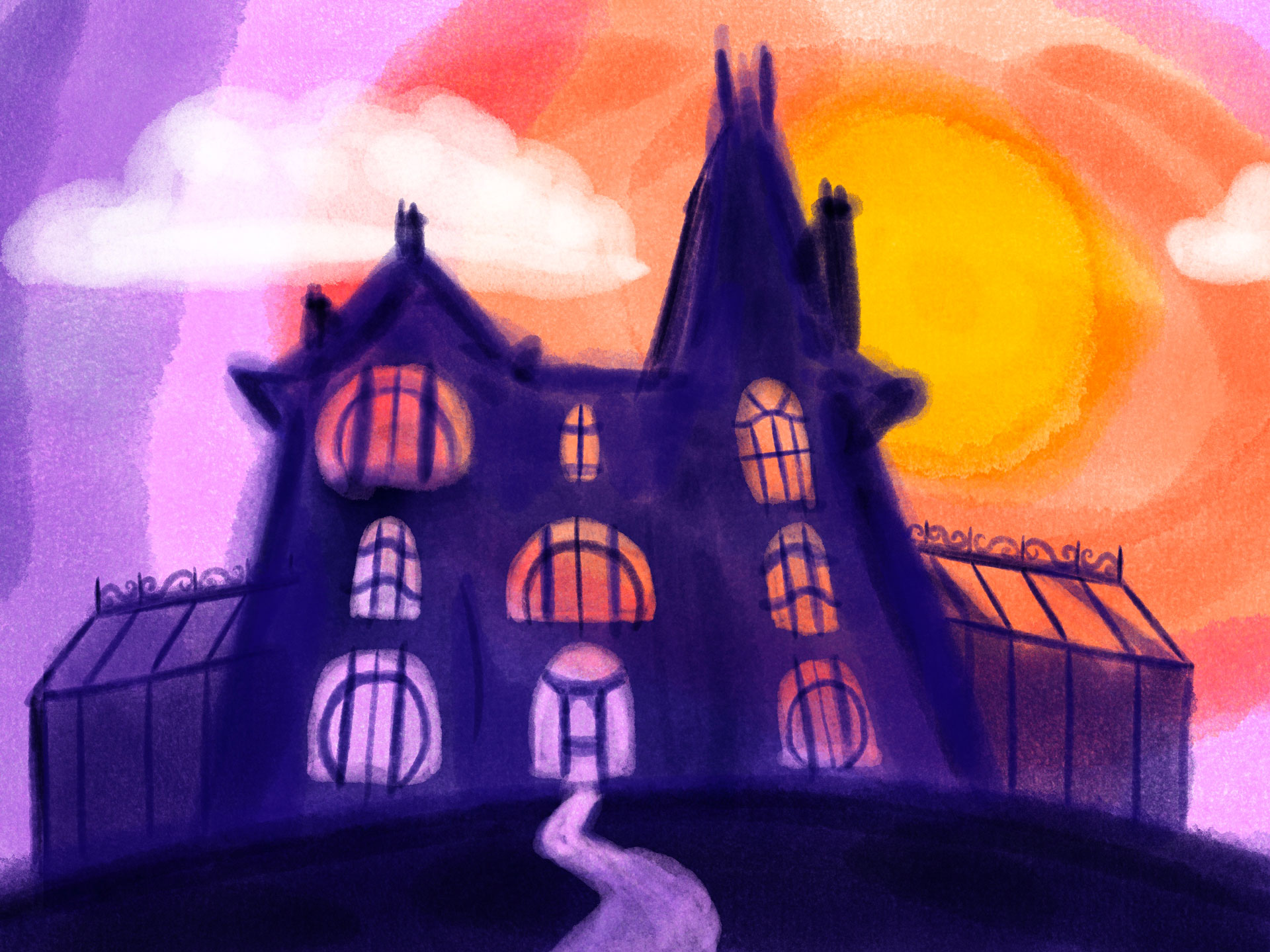
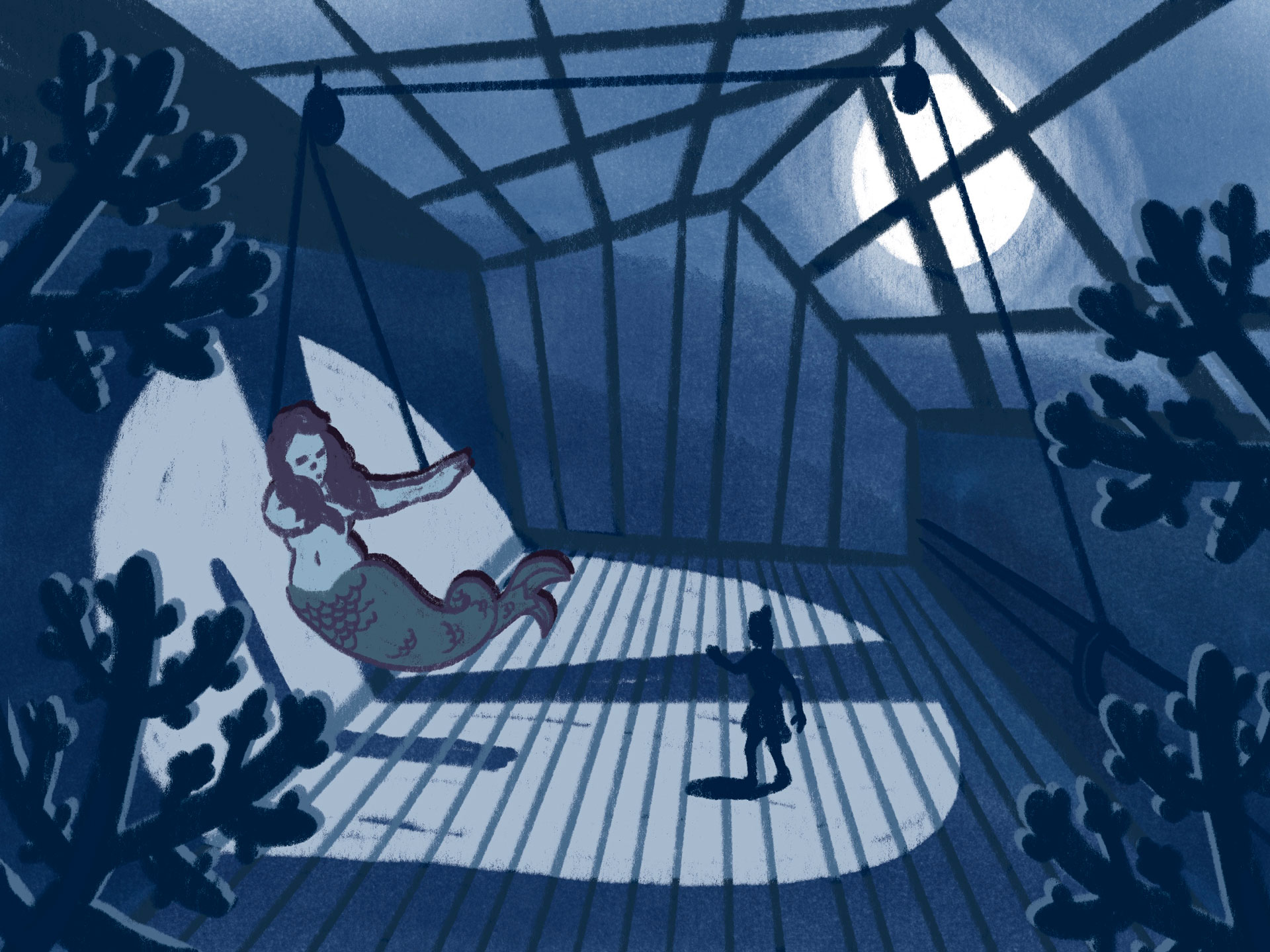

I chose to keep the canopies of the real studios that were used while Méliès was filming in order to let the most light enter the room.
And since we are in 1929 in France, I mixed it with some Art Nouveau inspired architecture elements.
The organic vocabulary in Art Nouveau esthetic is often used in horror movie to give life to the architecture, that’s why I wanted to take some inspirations from it.
That’s all for now!
I hope you’ll enjoy how the universe of “Méliès is Gone” looks so far.
There’s a lot more we cannot wait to share with you so make sure to stay tuned here, on Threads, X and Instagram.
À bientôt !